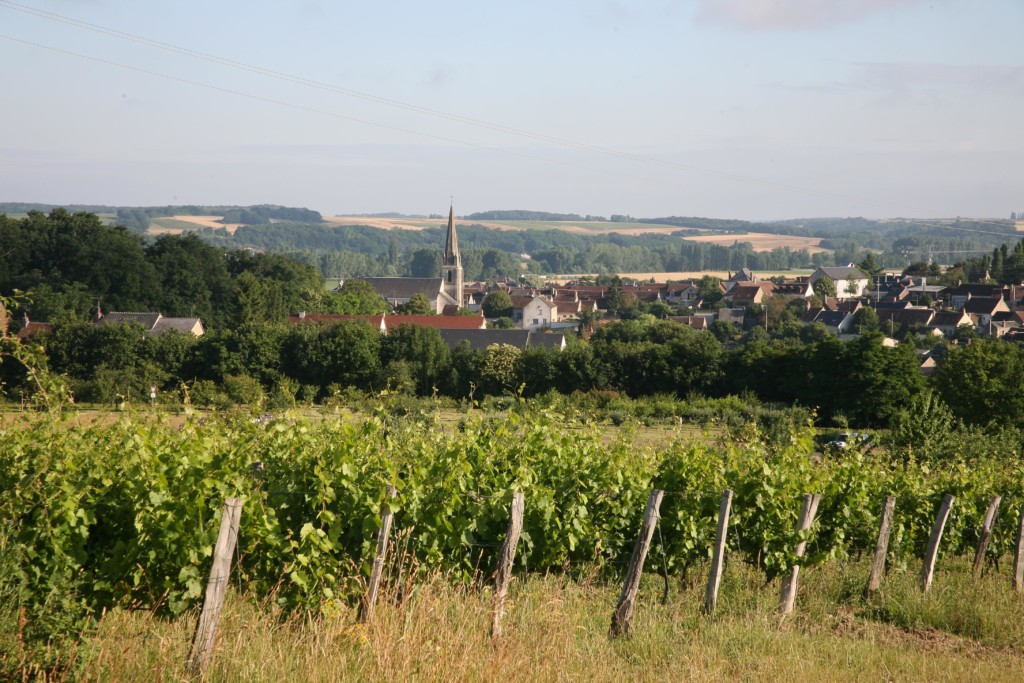
Coteaux du Vendômois
Terroir and Climate
The Appellation d'Origine Contrôlée (AOC) area of Coteaux du Vendômois extends across 28 municipalities, including Thoré-la-Rochette, where the Thoré plateau alone encompasses around a hundred contiguous hectares. These vineyards are scattered throughout the region known for the loops of the Loir River, situated between the towns of Vendôme and Montoire, approximately 15 kilometers apart. This AOC is exclusively located within the Loir-et-Cher department. The vineyards are planted along the banks of the Loir River, on south-facing slopes situated about 1.5 kilometers from the river.
SOILS CONTRIBUTING MINERALITY AND DISTINCTIVENESS:
Excellent Terroir, Rich in Flint The predominant terroir consists of clayey soils (12 to 14% clay content) enriched with flint, including small pink flints, and occasional limestone outcrops. This combination provides good water supply and ideal drainage conditions. The unique terroir imparts mineral characteristics and distinctiveness to the wines of Coteaux du Vendômois. "This entire area presents a physical and geological unity, the Cretaceous plateau with altitudes ranging from 110 to 140 meters has been carved by the river's course. The delimited terroir mainly extends along the sides of this valley where the flint clay of the Senonian period emerges." (INAO)
A HIGHLY FAVORABLE MICROCLIMATE AND LOW RAINFALL
With the vineyards located on east-facing slopes, the parcels are sheltered from the north and benefit from a microclimate facilitated by the Loir River, promoting early maturity. Temperatures are 2 to 3 degrees Celsius higher compared to the surrounding plains. The average temperature in January is around 3.5°C, while July sees slightly over 18°C. The annual average temperature ranges between 10.5°C and 11°C. There are approximately 2,000 hours of sunshine annually on average. Situated around 200 km from the Atlantic Ocean, the vineyards are subject to maritime influences – a moderately oceanic climate – slightly tempered by the Loire climate. Average annual rainfall is less than 650 mm. Winter rains replenish groundwater, spring rains aid in plant development, and relatively moderate summer rains complete a well-suited distribution cycle for the vines. September is usually a dry month. Locally, it's often said that the Loir Valley, spanning 2 to 3 km in width and 50 to 80 m in depth, generates a true microclimate due to its exposure, topography, and the network of river tributaries. This has been confirmed by the soil-climate study conducted in 1994.
History of the AOC
The vineyards of Coteaux du Vendômois have been established in the region since the 5th century. The first mention of Vendômois wines dates back to the year 1000. It's also known that King Henri IV, who greatly appreciated good wine, stopped at Prépatour, west of Vendôme. The king refreshed himself with wine from the slopes of Mont-Rieux. He liked it so much that he placed an order, the manuscript of which is still preserved at the Château de Saint-Germain-en-Laye.
Parcel Names with Evocative Meanings: Reflecting a Rich and Curious History ?
Most often derived from names of specific locations, the names of the parcels sometimes provide food for thought. For instance, in Coteaux du Vendômois, certain parcels are named "Les Cahors" and "l'Hermitage," quite simply! "Le Clos de la Gorge Sèche" (The Dry Throat Enclosure), "Le Pas Riche" (The Poor Step), "Les Justices," and "La Justice" seem to evoke possible inns, financially challenged landowners, and legal matters. "Les Saulneries" seems to echo ancient salt mines. As for "Trotte Putain," there used to be vineyards where there are now forests; the land was worked by difficult-to-manage donkeys, so the winemakers would sometimes exclaim "trotte...putain!" Another explanation may be told depending on the person you ask! In the 1920s, the vineyard still covered 2,000 hectares. After World War II, farmers were encouraged to replace vineyards with cereals. As a result, the vineyard's area gradually diminished. Today, the area remains at 350 hectares.
Achieving AOC Status in 2001: The Culmination of Efforts Initiated in 1945
In 1945, the profession sought V.D.Q.S. (Vin Délimité de Qualité Supérieure) status and obtained it. However, the appellation was only claimed a few years later and then disappeared. In 1960, a new request was made, and the appellation Coteaux du Vendômois was granted on July 4, 1968. The request for Appellation d'Origine Contrôlée recognition was submitted in 1987. The INAO (Institut National de l'Origine et de la Qualité) investigation committee visited the area on March 14, 1990, to provide guidance for achieving AOC status. The entire region then redoubled its efforts to meet the objectives. These efforts were ultimately rewarded: the Appellation d'Origine Contrôlée status was recognized by the INAO on November 9, 2000, and the AOC Coteaux du Vendômois decree appeared in the Official Journal on May 4, 2001.
AOC Coteaux du Vendômois Blanc
Coteaux du Vendômois offers little-known wines from somewhat forgotten vineyards – wines that are unique and relatively inexpensive, promoting ecology by preventing the urbanization of rural areas, given that the vineyards are a 40-minute TGV ride from Paris.
WHITE WINES: In single varietals or blends, they are marked by the clay and flint terroir. Dry and mineral-driven, they exhibit aromas of white flowers and citrus – enhanced by low-temperature fermentation – and possess great aging potential thanks to the Chenin grape, which also contributes natural freshness. They pair well with river fish, seafood, and cooked cheese.
• CHENIN, the main grape variety, locally known as Pineau de la Loire: at the northern limit of its maturity, it exhibits a precise balance on these limestone and flint-rich soils, marked by a pronounced supporting acidity.
• CHARDONNAY, an auxiliary grape variety (up to 20% of the vineyard's composition).
